15 best eco-friendly cleaning products, according to experts
« Eco-friendly » and « green » are words some brands toss around to describe cleaning products like all-purpose sprays and disinfectants. But what do these terms mean? In some cases, experts told us, these labels can mean nothing at all — the use of these words by brands is not regulated.
There is no specific criteria detailing what eco-friendly or green means when companies add it to a product’s packaging, explained Nancy Simcox, an assistant teaching professor at the University of Washington’s department of environmental and occupational health sciences. This poses a problem for shoppers — it’s hard to know whether we’re buying products actually designed with the environment in mind, no matter how often the word appears on its product website, label and packaging. A similar problem arises with buying face masks like KN95s, products claiming they’re carbon neutral or “clean” beauty products, unless they’re certified by a specific company or organization or otherwise beholden to an actual review process.
We talked to experts about what steps shoppers can take to find actually eco-friendly cleaning products and how to choose the best ones to buy for their homes. Experts also recommended additional Earth-friendly cleaning practices to consider adopting, from using microfiber towels to DIY cleaning solutions.
How to buy eco-friendly cleaning products
Eco-friendly. Green. All-natural. Sustainable. When brands use words like these on their packaging without contextualizing what they really mean, they’re “greenwashing” products, noted Simcox. In her experience, consumers don’t often question the significance of these words — if they did, Simcox argued, they would learn that definitions vary by brand and even by product.
Cleaning has gone through a revolution — cleaning products and chemicals can be vetted now and there’s a scientific basis to that vetting.
Nancy Simcox, Chair, APHA’s Occupational Health and Safety Section
In order to avoid “greenwashed” cleaning products, experts recommended looking for cleaning products certified by organizations like the EPA and Green Seal through verified ecolabels, which the EPA defines as “marks placed on product packaging that help consumers identify products that meet specific environmental performance criteria and are therefore deemed ‘environmentally preferable.’’’ Experts said that these ecolabels — which can be owned or managed by government agencies, nonprofit environmental advocacy organizations or private sector entities — are the best way to ensure that what you’re using really is designed to be safe for the environment in some degree.
“Cleaning has gone through a revolution,” said Simcox, who is also chair of the American Public Health Association’s Occupational Health and Safety Section. “Cleaning products and chemicals can be vetted now and there’s a scientific basis to that vetting. These certifications help guide the consumer in the right direction.”
Anna Reade, a staff scientist for the National Resources Defense Council (NRDC), a nonprofit environmental advocacy group, finds third party certifications to be helpful because consumers don’t have to be experts in chemicals to make educated shopping decisions. She said while shoppers can learn the specific names of dangerous chemicals and read cleaning product ingredient lists, it’s time-consuming. Instead, third party certifications do the work for you and simplify the process.
“It shouldn’t be hard to figure out how to protect ourselves and the environment from harmful cleaning supplies,” said Reade, who is a part of NRDC’s Healthy People & Thriving Communities program. “These labels and certifications really help people wade through their options.”
EPA cleaning product certification programs
Specifically for cleaning products, the EPA runs two ecolabel programs.
Safer Choice applies to cleaning products like all purpose cleaners, dish soap and laundry detergent.
Design for the Environment applies to antimicrobial pesticide products, which include all purpose, toilet bowl, tub and tile disinfectants and sanitizers.
According to the EPA, both certifications…
- Evaluate product performance and assess their ingredients to make sure they meet environmental and human health and safety criteria.
- Provide online databases where you can browse through certified products or search for products by name.
The EPA also claims to regularly audit brands to verify that the standards are being upheld.
Reade said a key component of Safer Choice is transparency of ingredients. Products that meet the standard are required to list all of the ingredients they contain on either their packaging or online, which she said is not required by law nationwide. Products also have to be packaged sustainably, such as in recycled plastic, for example.
Additionally, in light of the coronavirus pandemic, Reade noted that you can now filter Design for the Environment’s database to show certified products the EPA has determined to be able to kill Covid-19. She said the overuse of cleaning products has been a concern during the pandemic, both in regard to excess chemicals making their way into ecosystems and human exposure to strong chemicals in large quantities.
15 Best household cleaning products that meet EPA standards
There are thousands of products listed between the Safer Choice and Design for the Environment databases. To help you sift through the lists, we rounded up cleaners and disinfectants that meet the standards and are currently available at Shopping reader favorite retailers like Amazon and Walmart.
Cleaning products certified by Safer Choice
All purpose cleaning spray: Blueland
Blueland Multi-Surface Cleaner
Blueland’s Multi-Surface Cleaner, which made an appearance on Shark Tank, is designed to be used on surfaces like countertops and stovetops. It comes with a reusable bottle and three cleaning tablets. To use, fill the bottle with water and drop in a tablet, which makes 24 ounces of cleaning spray. When the bottle is empty, you can refill it. Additional cleaning tablets are sold separately.
Other Blueland products also meet the Safer Choice Standard, like its hand soap, dishwasher tablets and bathroom cleaner.
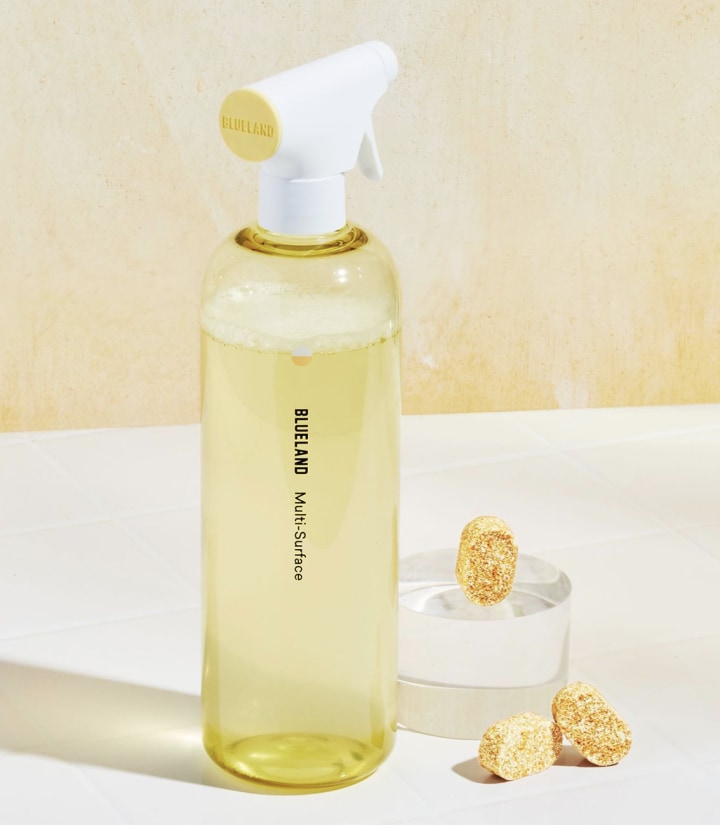
All purpose cleaning wipes: Clorox
Clorox Compostable Cleaning Wipes
Clorox Compostable Cleaning Wipes are made from plant fibers that are compostable in municipal facilities. They can clean hard surfaces like sealed wood, sealed granite and stainless steel. The wipes come in three scents that meet the Safer Choice Standard: Free & Clear, Simply Lemon and Original Fresh.
Clorox’s glass cleaning system, bathroom cleaning system and other products are also Safer Choice certified.
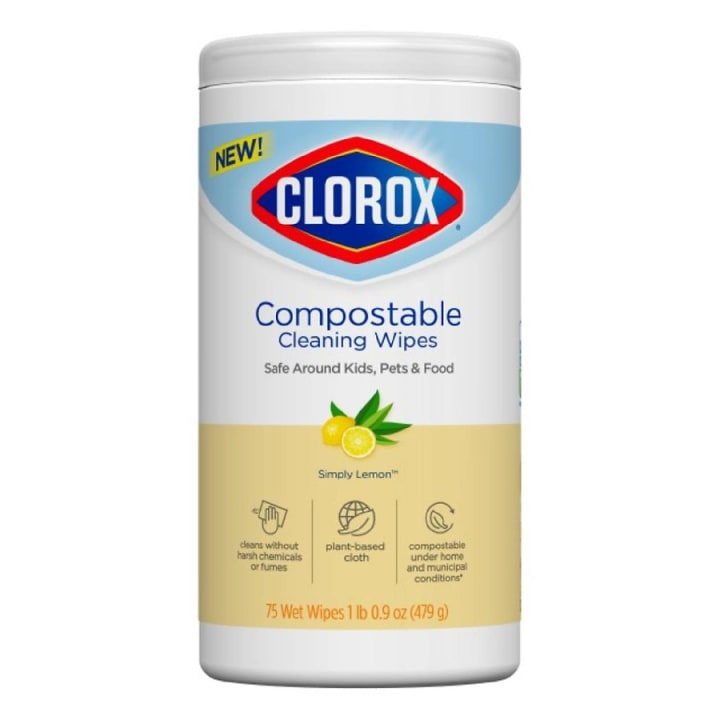
Laundry detergent: Tide
Tide Free and Gentle Liquid Laundry Detergent
Tide’s Free and Gentle laundry detergent is hypoallergenic, dye-free and fragrance-free. It’s designed to remove residue like dirt, food and stains from clothes while maintaining their color. The laundry detergent also boasts the Target Clean seal.
Other Tide products are also Safer Choice certified, like the brand’s PurClean Laundry Detergent in Honey Lavender and Unscented.
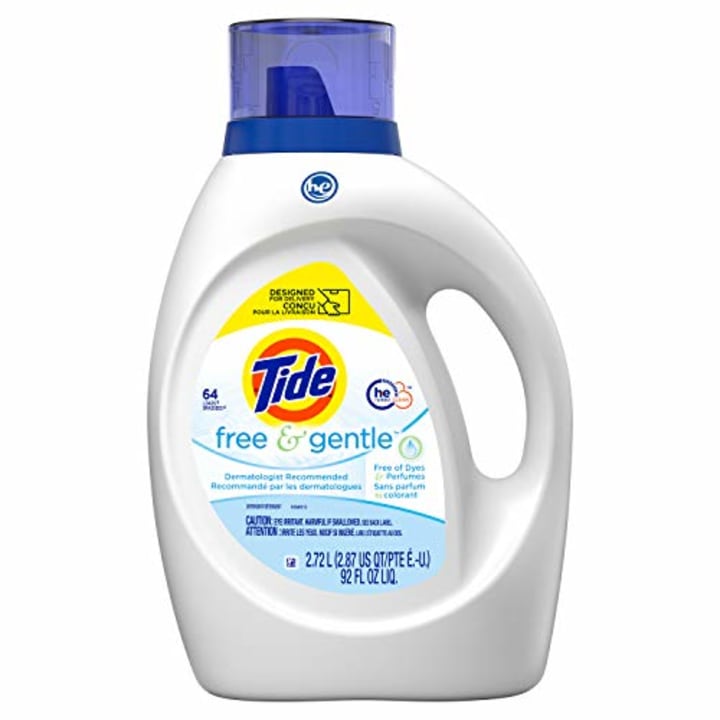
Carpet cleaner: Woolite
Woolite Carpet and Upholstery
This carpet cleaner comes with a built-in fabric safe brush to help you clean and eliminate odors from fabric. It also helps remove stains from fabric, carpet and upholstery.
Woolite’s Oxy Deep PowerShot stain remover is also Safer Choice certified, as are other products by the brand.
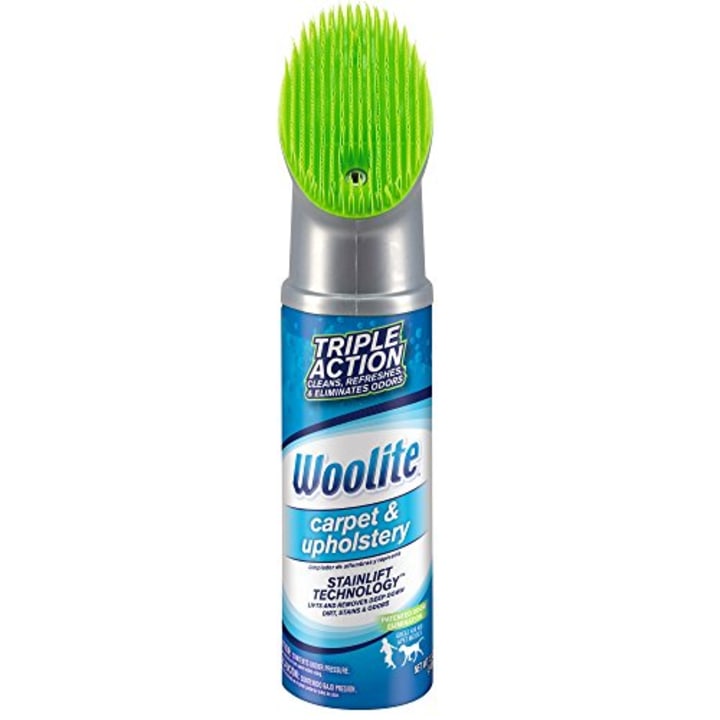
Bathroom cleaner: 9 Elements
9 Elements Bathroom Cleaner
9 Elements Lemon and Eucalyptus bathroom cleaner meet the Safer Choice Standard. The product contains vinegar to help clean soap scum, hard water buildup and grime. It’s safe for use on bathroom surfaces like ceramic, tile and porcelain, too. The bathroom cleaner also contains either lemon or eucalyptus essential oil, giving the products their respective scents.
9 Elements laundry detergent, multi-purpose cleaner and more are also Safer Choice certified.
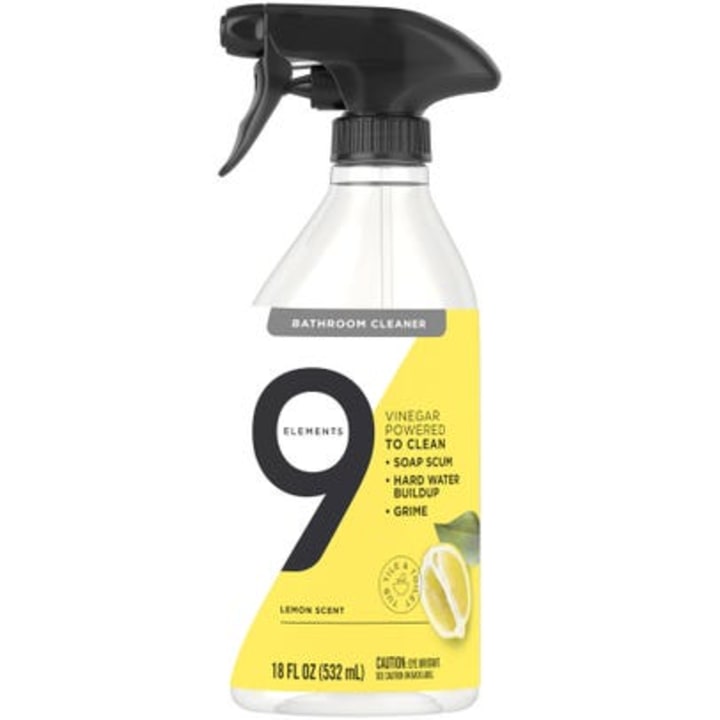
Dish soap: Home Made Simple
Home Made Simple Dish Soap
Home Made Simple’s Rosemary, Lemon and Lavender dish soap meet the Safer Choice Standard. The product is made from plant-based ingredients according to the brand, and comes in a recyclable liquid soap bottle. This soap cleans grease, left over food and other grime off of dishes.
Additional products, like the brand’s multi-purpose cleaners, are also Safer Choice certified.
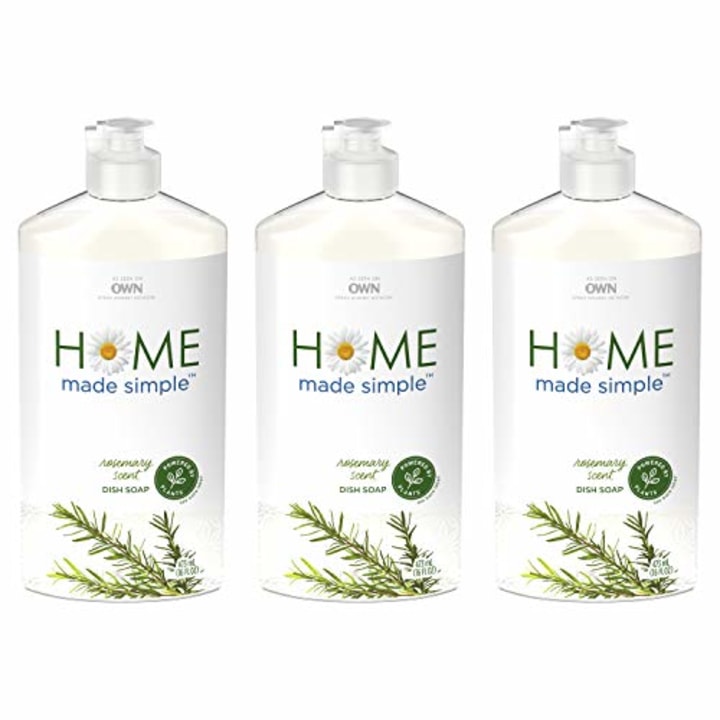
Granite cleaner: JAWS
JAWS Granite Cleaner & Polish
JAWS Granite Cleaner & Polish is streak free and made from a non-toxic formula that’s safe for natural stone surfaces. The product’s starter kit comes with a reusable bottle with two refill pods to make two bottles of cleaner. To use, fill the reusable bottle with water and drop in a pod. The cleaner has a cucumber-basil fragrance and extra pods can be purchased separately.
Additional JAWS products also meet the Safer Choice Standard, like glass and bathroom cleaners.
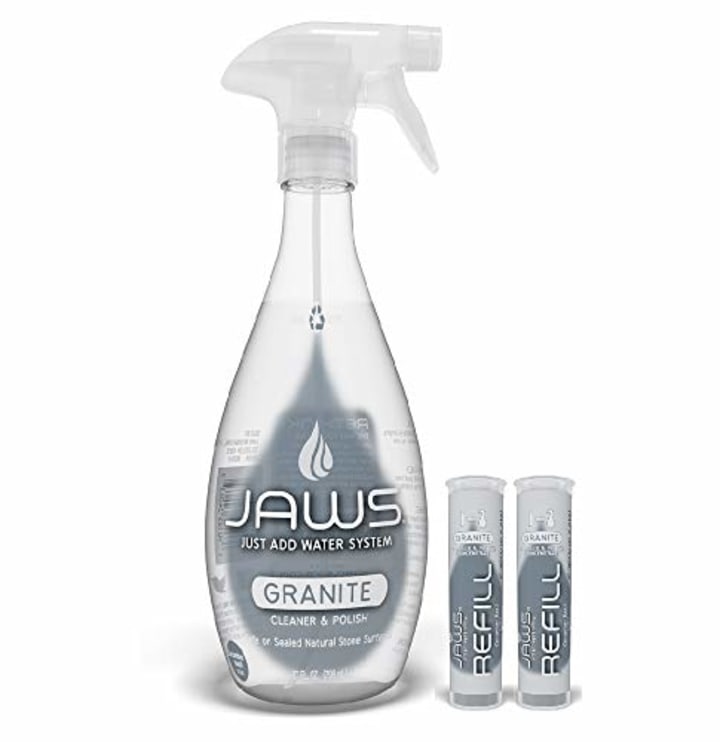
Floor cleaner: Bona
Bona Hard-Surface Floor Cleaner with Lemon Mint
This floor cleaner from Bona is designed for hard-surface floors like stone, no-wax sealed tile, laminate and luxury vinyl (LVT). After spraying it on the floor, you can wipe the cleaner away with a mop and it leaves behind a citrus scent, which it gets from lemon, peppermint and spearmint essential oils.
Other Bona products are also Safer Choice certified, like the brand’s PowerPlus Wood Surface Deep Cleaner.
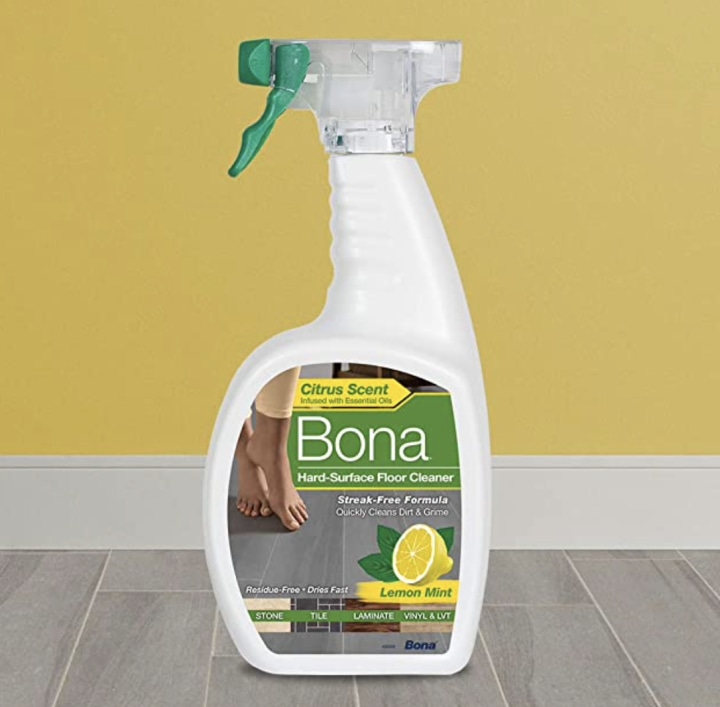
Hand soap: ECOS
ECOS Hypoallergenic Hand Soap
A variety of ECOS hand soap meets the Safer Choice Standard, including its Lemongrass, Lavender, Orange Blossom and Free & Clear options. It’s made with a non-drying formula that cleans and softens hands. The soap is also hypoallergenic.
Other ECOS products also meet the Safer Choice Standard, including its ice melt and all purpose cleaning spray.
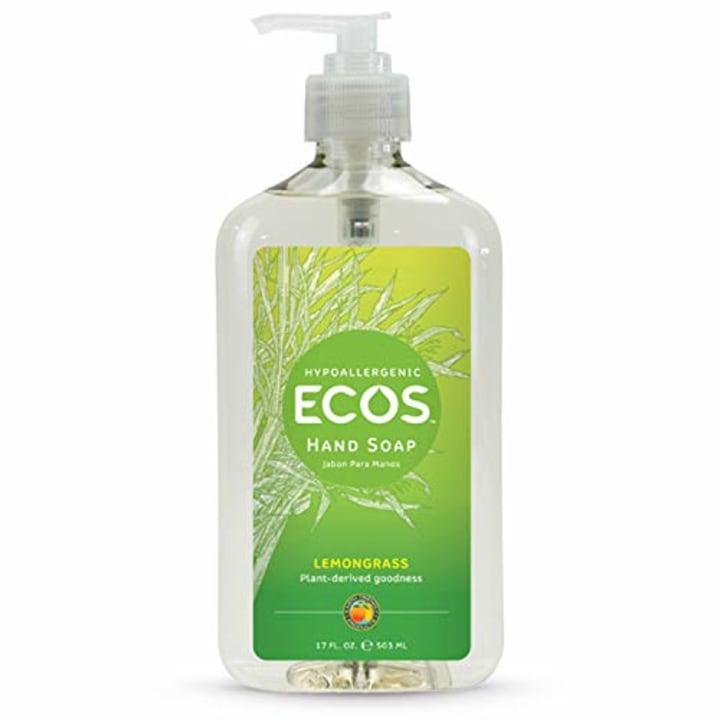
Toilet cleaner: Boulder Clean
Boulder Clean Toilet Bowl Cleaner
Boulder Clean’s Toilet Bowl Cleaner works to remove stains, hard water build up, dried soils and mineral deposits. After adding it to the toilet bowl, either scrub clean or let the cleaner sit for about 10 minutes for more stubborn stains. Then, flush the cleaner down the toilet. The toilet cleaner comes in two scents: Bergamot Rosemary Eucalyptus and Fresh Eucalyptus.
Additional Safer Choice certified products from Boulder Clean include the brand’s all-purpose cleaner and laundry detergent.
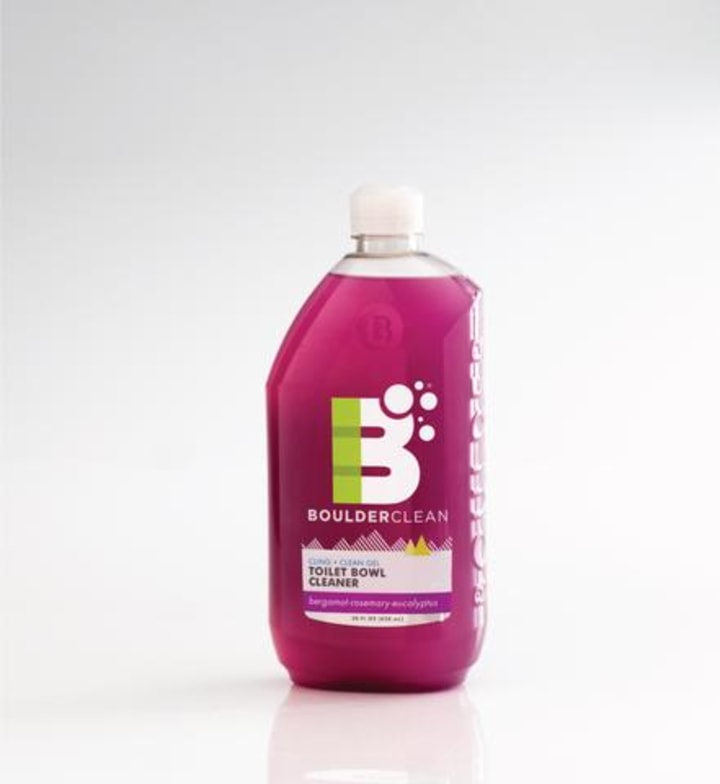
Degreaser: WD-40
WD-40 Industrial-Strength Cleaner and Degreaser
Rid automotive parts, tools, floors, industrial machinery, appliances and other equipment of grease with this product from WD-40. It’s made from a water-based formula and comes in a non-aerosol spray bottle. You can safely use the product on surfaces like aluminum, chrome, glass, plastic, rubber, stainless steel, granite, leather and paint.
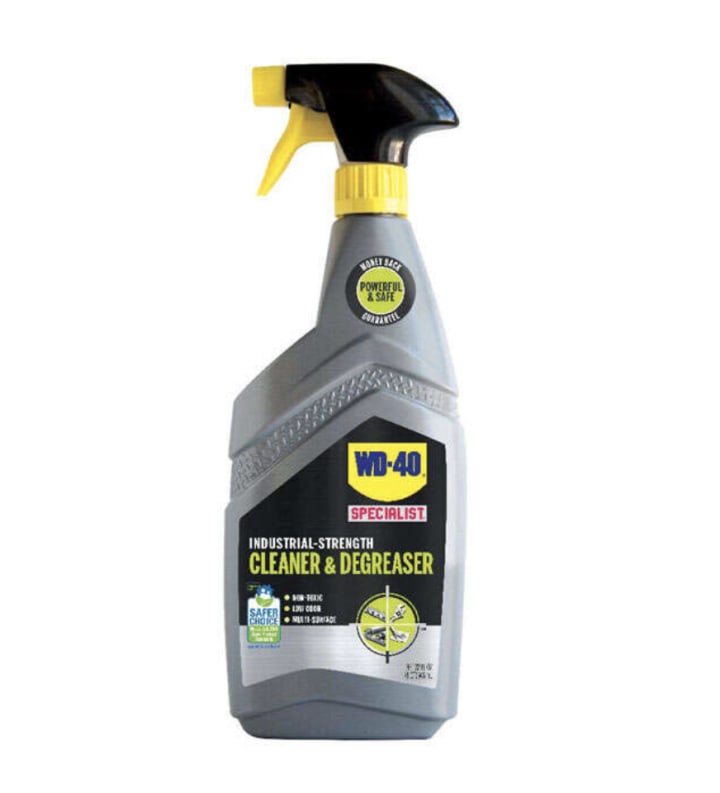
Dishwasher detergent: Seventh Generation
Seventh Generation Dishwasher Detergent Gel
Seventh Generation’s Free & Clear and Lemon dishwasher detergent gel both meet the Safer Choice Standard. The detergent is designed to clean dishes in the dishwasher, getting rid of dirt and grease to leave them streak free. The product’s formula is made with plant-based ingredients, and it’s free from fragrances, chlorine and dye. Additional Safer Choice certified products from Seventh Generation include its all-purpose spray and fabric softener sheets.
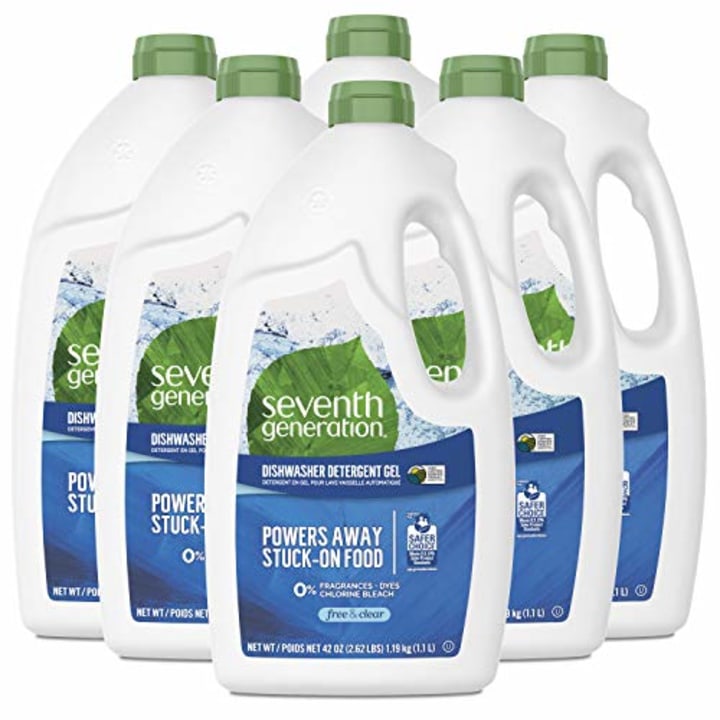
Cleaning products certified by the Design for the Environment program
All purpose disinfecting wipes: Lemi
Lemi Shine Disinfecting Wipes
Lemi Shine Disinfecting Wipes say they kill over 99.9 percent of bacteria and viruses, including Staph, Salmonella and E. Coli. The wipes are also on the EPA’s list of cleaning products determined to kill Covid-19. They contain natural citric acid to clean surfaces like kids toys, countertops and doorknobs. Each container comes with 75 antibacterial wipes.
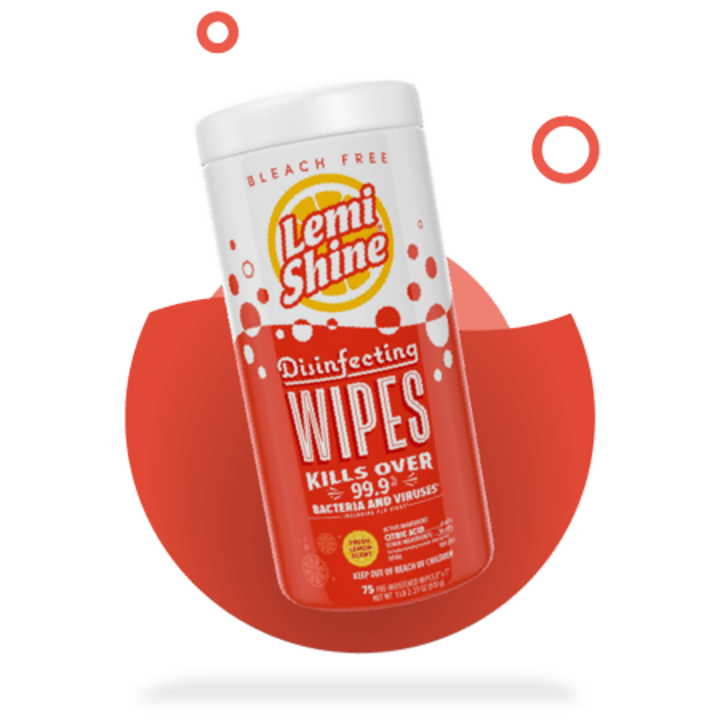
All purpose disinfecting spray: Lysol
Lysol with Hydrogen Peroxide Multi-Purpose Cleaner
Determined to kill Covid-19 by the EPA, this multi-purpose cleaner from Lysol is made with hydrogen peroxide. When sprayed on surfaces, the hydrogen peroxide formula releases micro bubbles that work to dissolve grease and soap scum. The brand says it eliminates 99.9 percent of viruses and bacteria.
Lysol’s Lemon & Lime Blossom and Fragrance Free Multi-Surface Disinfectants also meet the Design for the Environment’s standards (while we can’t find them for sale online, you may come across them in stores).
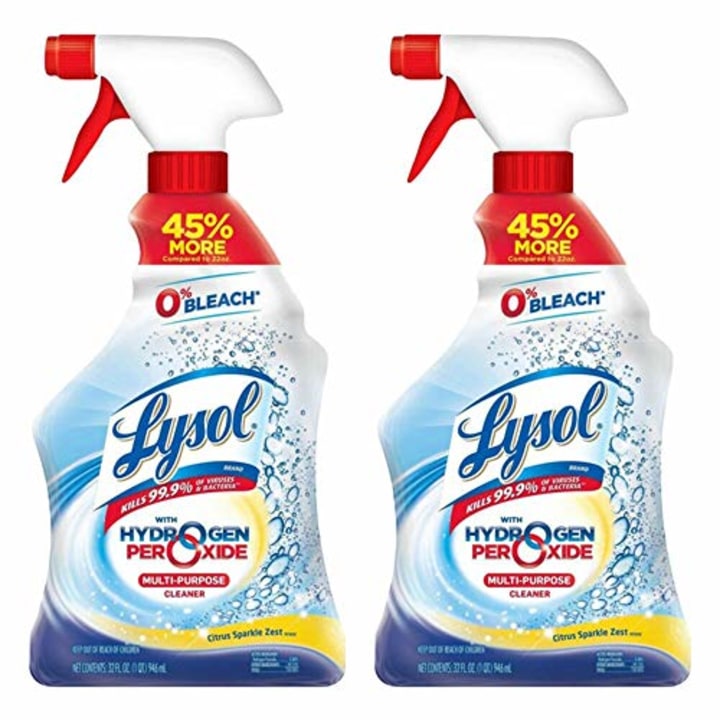
Disinfecting toilet bowl cleaner: Lysol
Lysol Bleach Free Hydrogen Peroxide Toilet Bowl Cleaner
Like the multi-purpose cleaner, this toilet bowl cleaner from Lysol also contains hydrogen peroxide. It works to kill bacteria and viruses that may be found in the toilet bowl, as well as gets rid of dirt and stains. The product’s formula does not contain bleach and leaves a fresh scent behind.
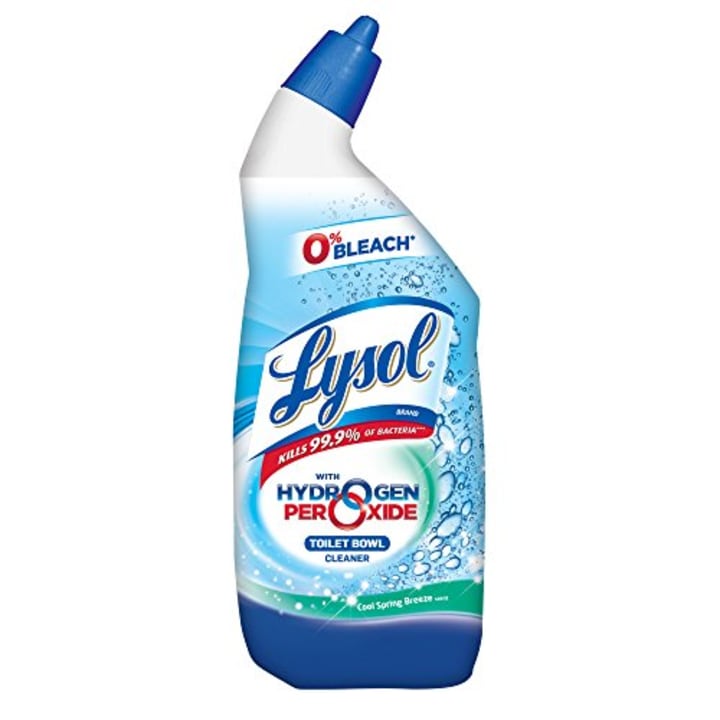
How do cleaning products impact the environment?
The most concerning ingredients in cleaning products are some of the chemicals in them, said Chris Cappa, a professor of civil and environmental engineering at the University of California, Davis.
According to the United States Environmental Protection Agency, cleaning products are released into the environment in two main ways: through the evaporation of volatile components and when people wash them down drains. And when cleaning products grow especially popular, as they did during the pandemic, more chemicals are needed to make those products in the first place.
Evaporation of volatile components
Cappa said the majority of chemical compounds in cleaning products are organic, but volatile organic compounds (VOCs) are a subset that more readily evaporate and can negatively impact air quality, both indoors and outside, according to the EPA. Indoors, VOCs might appear in cleaners, disinfectants, aerosol sprays, air fresheners and similar products. Outdoors, VOCs that enter the atmosphere can contribute to urban smog, both through the formation of ozone and of particulate matter, which is sometimes referred to as aerosols. In high concentrations, Cappa said ozone and particulate matter are bad for our respiratory and heart health — ozone has similarly negative effects on plants and crops.
Chemicals down the drain
If you use a cloth or sponge to wipe down surfaces with cleaning products and then rinse them out in the sink, the residual cleaning products go down the drain. The same happens if you spray cleaning products in the sink, shower or bath and wash them away. The EPA states that chemicals can enter our waterways through drains, which may contribute to poor water clarity, as well as disrupt the normal biological functions of wildlife.
“When we think about the cleaning products we’re buying, it’s important to consider that some contain chemicals that are toxic to you and to organisms downstream,” Cappa noted.
Cleaning products during the pandemic
In 2020, the Centers for Disease Control and Prevention and the American Association of Poison Control Centers conducted a study that Simcox said signaled that people were buying and using more cleaning products, and thus releasing more chemicals inside and outside their homes. Researchers looked for an association between “Covid-19 cleaning recommendations from public health agencies and the media and the number of chemical exposures reported to the National Poison Data System,” based on data from the nation’s 55 poison control centers.
From January to March 2020, poison centers received 45,550 exposure calls related to cleaners and disinfectants — an increase of more than 20 percent from the same January-to-March timeframe in 2019 and a 16.4-percent jump from 2018. While the study emphasizes no definite link between exposures and Covid-19 cleaning efforts, “there appears to be a clear temporal association with increased use of these products.”
Other cleaning product certifications
In addition to the EPA, nongovernmental entities also evaluate and sometimes certify cleaning products based on their own environmental safety standards. For example, Simcox said some cleaning products are certified through programs like Green Seal, Ecologo and Cradle to Cradle. Each has its own set of standards and lists products that meet requirements on online databases. Reade also mentioned that the Environmental Working Group, a nonprofit activist organization, has a Guide to Healthy Cleaning, which evaluates products and assigns hazard ratings for a variety of cleaners and ingredients. The Environmental Working group verifies cleaning products according to its own standards, too.
Can you make your own cleaning products at home?
Reade said you can make eco-friendly cleaning solutions at home, but they won’t work for everything.
“Homemade cleaning solutions do a really great job of cleaning your home, especially for low touch or low traffic areas. But when you should use them depends on what the job is,” Reade said. “If you’re concerned about disinfecting or sanitizing a surface, I would stick to products on the EPA’s Design for the Environment list.”
To make an all-purpose spray at home, start by filling a spray bottle with equal parts water and white vinegar to use on coffee tables, windows and blinds, recommended Bailey Carson, a home care expert at Angi.
Simcox said you can also add baking soda to the mixture, and put it down drains to reduce odors and soap scum.
Additionally, beyond cleaning products, single-use items like paper towels, sponges and mop heads also impact the environment since they’re thrown away and can accumulate in landfills. Carson said to swap these items out for reusable options like biodegradable sponges or microfiber cloths, and mops and dusters with washable heads.

